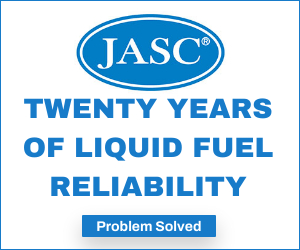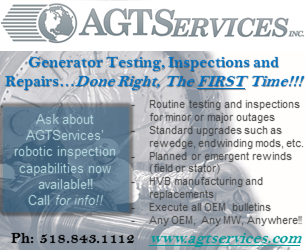A roundtable on winterization at the 2021 conference of the Combined Cycle Users Group drew on the vast experience owner/operators who have faced heat-trace-system challenges at their facilities. There are still two outage seasons before winter 2023 to implement the many best practices shared by colleagues from Woodbridge Energy Center, Dogwood Energy, and others.
By virtue of its location and importance to the grid, Woodbridge, a 2 × 1 7FA.05-powered combined cycle located outdoors in the Northeast, has heat-trace experience beyond that of many others in the industry. Engineering Manager Mike Armstrong represented his plant in the roundtable.
What follows are details on Woodbridge’s heat-trace initiatives, some of which were not discussed during the roundtable because of time constraints.
Get off on the right foot. Plant personnel learned during commissioning, and afterwards, that poor installation practices coupled with the lack of documentation made it difficult to troubleshoot the heat-trace system. This required staff to spend roughly 60 man-hours per week identifying and fixing issues with heat-trace circuits not functioning as designed. The poor performance of the heat-trace system jeopardized reliability and operability by allowing critical instruments and equipment to freeze-up.
Woodbridge was constructed by a single EPC contractor with multiple equipment suppliers. Design of the heat-trace system was subcontracted to a reputable supplier while installation was handled by the EPC contractor’s craft electricians, who had little or no experience with heat-trace equipment.
The various scope-of-supply boundaries and types of heat tracing proved problematic. Many field changes were required to complete the installation—changes performed without the knowledge of the designer and poorly documented.
Heat tracing was designed to maintain an equipment temperature of 40F at an ambient of -8F. The heat-trace supplier implemented the use of microprocessor-based temperature control and monitoring panels which required other new equipment—including various temperature sensors, new alarm capability, DCS integration, self-testing circuit cards, and programmable RTD outputs.
The lack of qualified oversite from the heat-trace designer during equipment installation and in preparing documentation of as-built conditions proved challenging for the plant operator once it took possession of the facility.
The first step in fixing the problem was to bring back the original heat-trace designer to audit the entire system and identify and correct any deficiencies. This required all 612 individual circuits to be reviewed to ensure the correct materials were used along with the correct installation practices. Next, all the documentation was updated to reflect as-built conditions. This information and a thorough review ensured the system was designed and installed as originally intended.
With the proper installation and operational techniques identified for the new technology, the plant operator developed a heat-trace guide to provide a laymen’s approach to better understanding of equipment and operational requirements. In the guide, details which had been segregated because of scope breaks are included in one location, eliminating the need for multiple sources of documentation. The guide is written in plain language and includes pictures of installed equipment to better acclimate the reader and facilitate troubleshooting.
Success. Using the original design team to identify and fix the installation issues the heat-trace system achieved its specified objectives. System performance now is aligned with the original design intent, ensuring safe and reliable operation of plant equipment during times of inclement weather.
Upon release of the guide, personnel were immediately able to reference site-specific information for heat-trace issues in a timely manner. Today, only about 10 man-hours per week are required to properly troubleshoot system issues, down from the 60 mentioned earlier. The guide also helped personnel identify equipment improperly installed, before it adversely impacted heat-trace performance.
More ideas. One or more of the following best practices pertaining to the development/design, and construction/startup of a plant-wide heat-trace system also may have value at your facility:
Development/design.
-
- Add smart-panel amp indication on each circuit as well as a light to visually indicate that the circuit is energized. This makes it easier for operators to walk down the system, verifying that the heat tracing is on and working when it should be.
- Have your engineer do a detailed evaluation of all vendor equipment (gas and steam turbines, HRSGs, etc) requiring heat tracing and make sure that the information is clearly presented to the heat-trace system supplier.
- The mechanical engineer responsible for the heat-trace design scope should be the same person who reviews the vendor’s design isometrics. The field engineer may not necessarily understand the mechanical properties of the piping system and may miss things that should be included in the isometric drawings. In addition, the mechanical engineer is better positioned to be aware of potential piping changes needed.
- Since the heat-trace design usually is not complete until late in the project, the necessary conduit cannot be installed until very late in the schedule. You can benefit by moving a large portion of this work forward. For example, run small (12 in.) cable trays in areas known to require heat tracing (finger racks, main racks, bottom of HRSG, etc); once the heat-trace design is finalized and power connection devices are located, only short pieces of conduit from the tray to the devices are needed.
Construction/startup.
-
- Ensure that compressor bleed-valve actuators and inlet-filter differential-pressure instruments are heat-traced and insulated properly for adequate freeze protection.
- Coordinate with the instrumentation fitters to make sure that when cutting back the heated tube bundles they leave at least 3 ft of heat-trace cable on both ends. When they cut the heated tube bundles short, there is not always enough cable to reach the power connection kit inside the heated enclosure, or to trace the root valve. This results in having to relocate power-connection kits and add jumpers to accommodate.
- Ideally, start the heat-trace crew when the piping discipline is at least 65% complete. Prior to this, the pipe systems generally are not complete (missing valves, permanent supports not installed, etc) which creates rework for heat-trace crews. This will allow a large runway ahead of the heat-trace crew, increasing productivity. Impact upon the project completion schedule and weather conditions may override this.
- When installing the rubber boots in the termination kits, the leads tend to bunch up at the bottom and touch. If there’s a ground fault during commissioning, 80% of the time it’s likely to be in the rubber-boot connection.
- Perform a thorough heat-trace audit each summer to identify and address any issues before the cold weather sets in.







